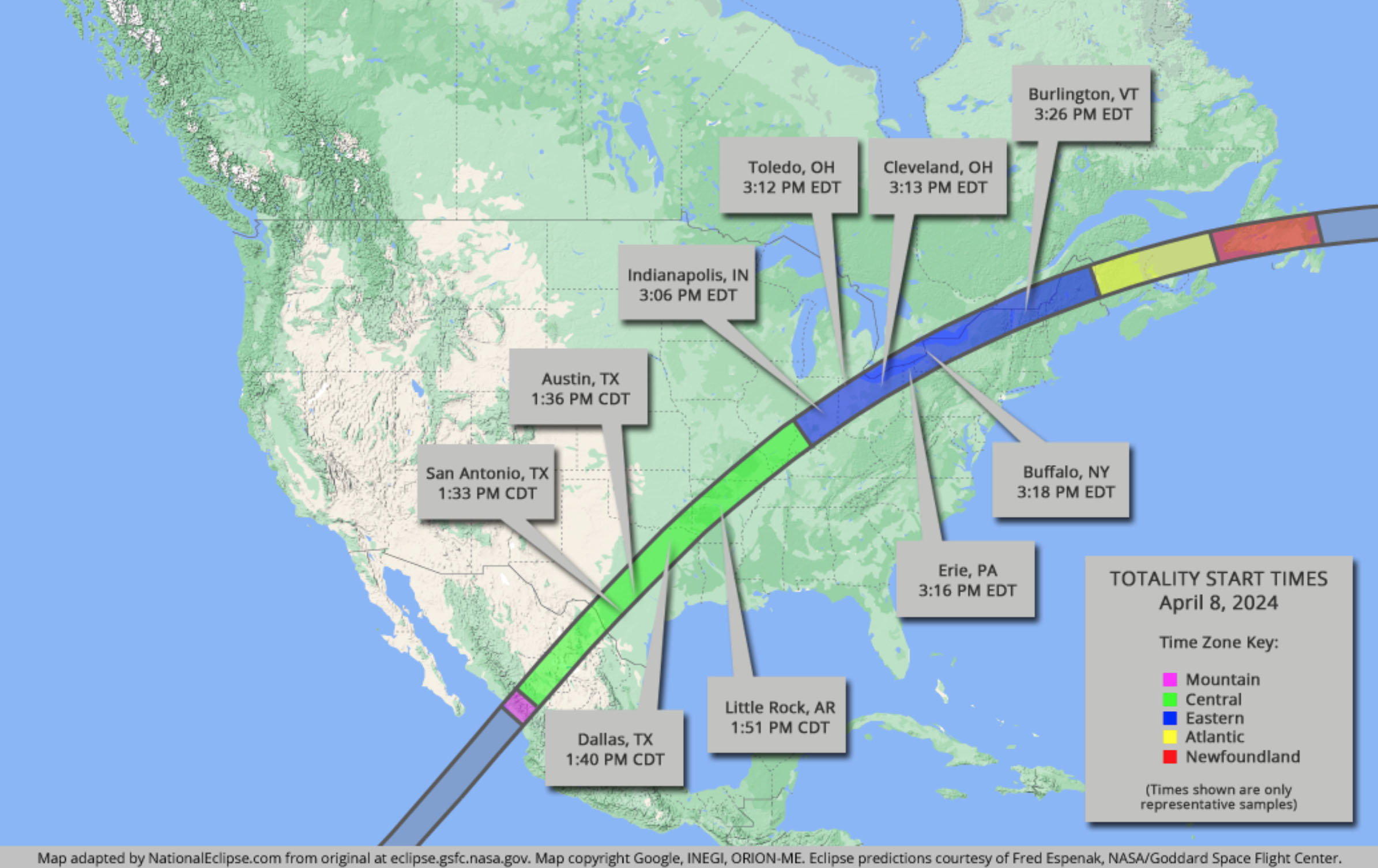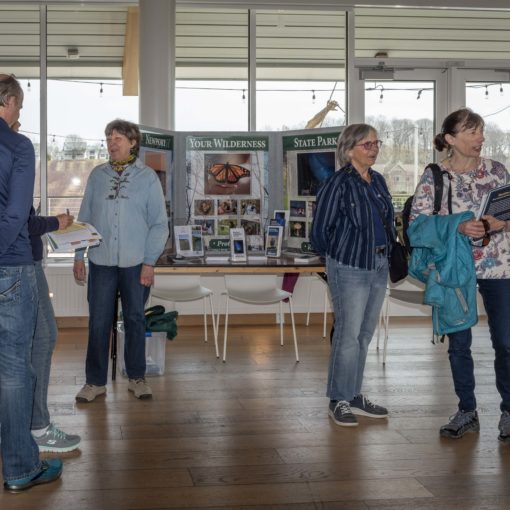by Andy Orf
President, Northern Door Astronomy Club
The Great North American Total Solar Eclipse will occur April 8, 2024. A solar eclipse is an astronomical event that occurs when the Moon passes between the Earth and the Sun. Astronomers call this an occultation – an interruption of light from a celestial body by another celestial body.
The Moon orbits around the Earth every 27.3 days, and 12 times a year. When the Moon moves across the Sun as viewed from Earth, it casts a shadow on Earth (the Moon’s umbra), and temporarily obscures our view of the Sun, either totally or partially.
There could be a partial eclipse of the Sun in successive months, but on average there is a partial solar eclipse 2 to 5 times a year. A total solar eclipse is much more rare. Because the Moon’s orbit around the Earth is tilted 5 degrees, the orbit is slightly elliptical. If the center of the Sun and the center of the Moon are not perfectly aligned, the Moon’s shadow on Earth will only obscure only a part of the Sun. Only when the Sun and the Moon are perfectly aligned will the Moon’s shadow totally block out the Sun, and it is a total eclipse.
On average there is a total solar eclipse on Earth every 18 months. The actual totality is a narrow band about 100 miles wide, as the shadow tracks across the face of the Earth from horizon to horizon. The April 8, 2024 total eclipse 100-mile band will begin in the Pacific Ocean, cross central Mexico, then cross 13 states in the U.S. from Texas to Maine, go through Nova Scotia, Canada, and finally end in the Atlantic Ocean.

Although the totality band is a very narrow 100 miles, the eclipse can be partially observed about 1,000 miles from the totality band. The April 8, 2024 solar eclipse will be partially observed throughout most of the continental U.S. The closer to the totality band the higher the percentage of the Sun that will be obscured. The closest town to Door County that will experience a total eclipse is Ft. Wayne, Indiana., which is about 300 miles away. Although the April 8, 2024 eclipse will not totally block out the Sun in Door County, it will block out 86% of the Sun, and is an event well worth seeing.
Although there could be a total eclipse somewhere on Earth on average every 18 months, a solar eclipse that totally blocks out the Sun can be observed at any particular place on Earth only about once every 400 years. A total eclipse in the United States last occurred August 21, 2017. The one before that was in 1979, and there won’t be another total eclipse of the Sun in the U.S. until 2044.
Observing an eclipse of the Sun in totality is a spectacular event. During totality, which only occurs for a few minutes, the daylight sky turns to night as the Moon’s shadow entirely blocks out the Sun. All that can be seen of the eclipse is the Sun’s corona – the atmosphere that surrounds the Sun from the radiation emitted by the Sun. Stars can be seen, and animals may respond unusually.
A total solar eclipse was not accurately predicted until 1715. Before then a total solar eclipse was considered an omen of a fortuitous event. The fact that the Moon can totally block out the Sun is an oddity of nature. A total eclipse can occur because although the Sun is 400 times larger than the Moon, the Moon is 400 times closer to Earth than the Sun. This oddity makes the size of the Sun and the Moon appear to be the same size.
Please join naturalist Beth Bartoli at Lot 3 in Newport State Park for a viewing of the eclipse. There will be a discussion at 12:30pm. The eclipse begins at 12:57, the 86% partial maximum will occur at 2:10, and the eclipse ends at 3:33.
You should never look directly at the sun, as it can cause serious retina eye damage. Special eclipse eyeglasses will be available, which will allow you to look at the solar eclipse safely. We can’t control the weather; if it is cloudy, it will interfere with observing the solar eclipse. We are hoping for a clear sky the day of the event.




